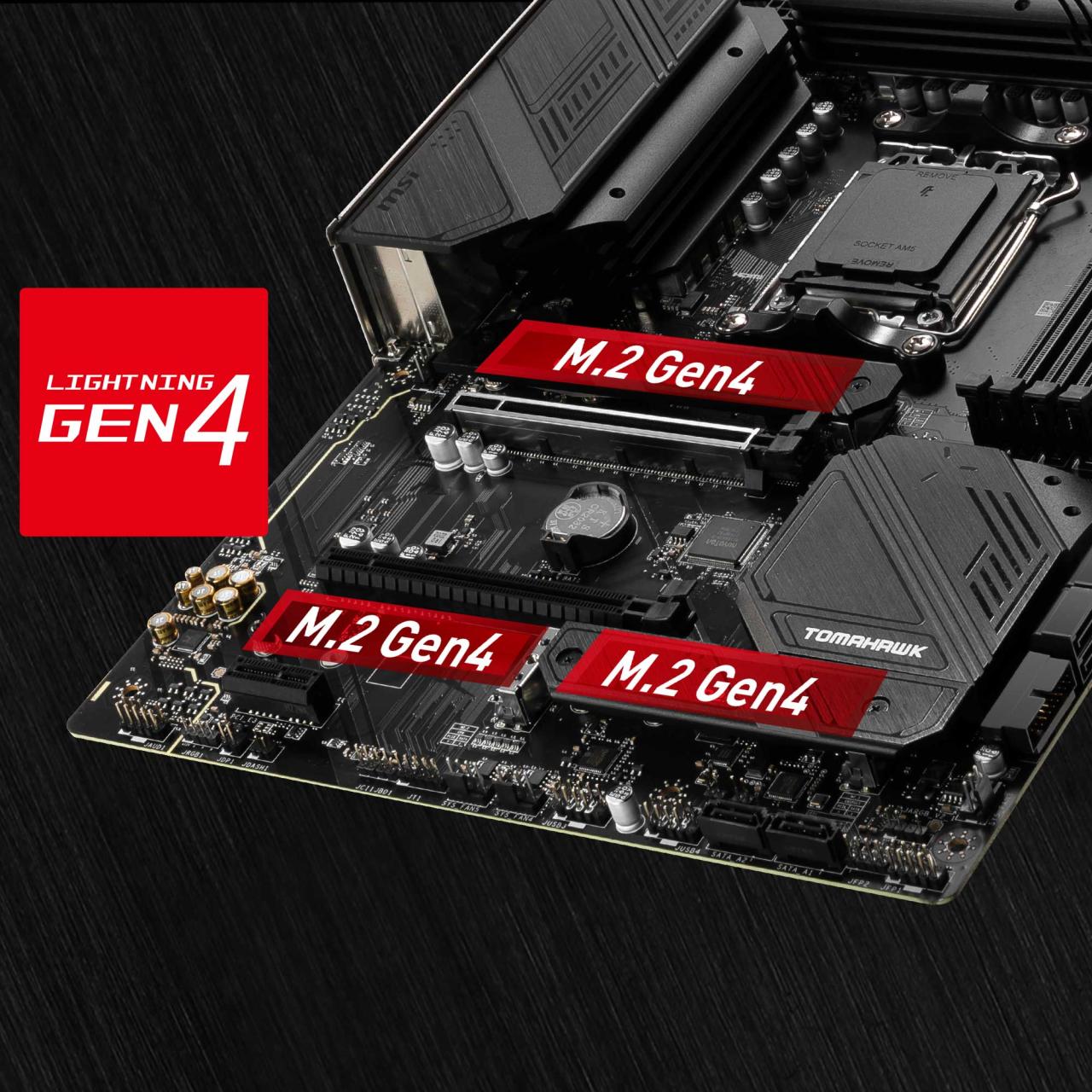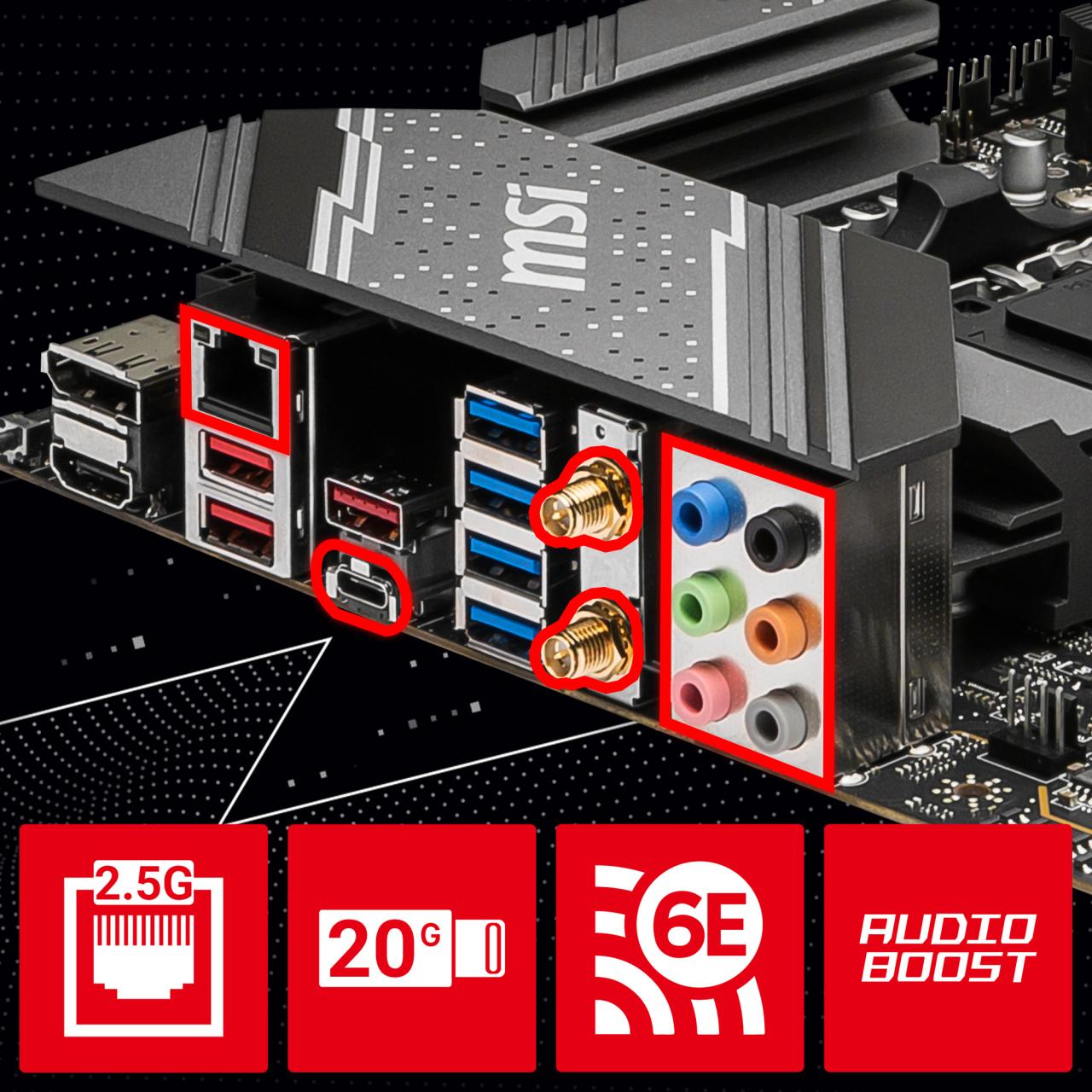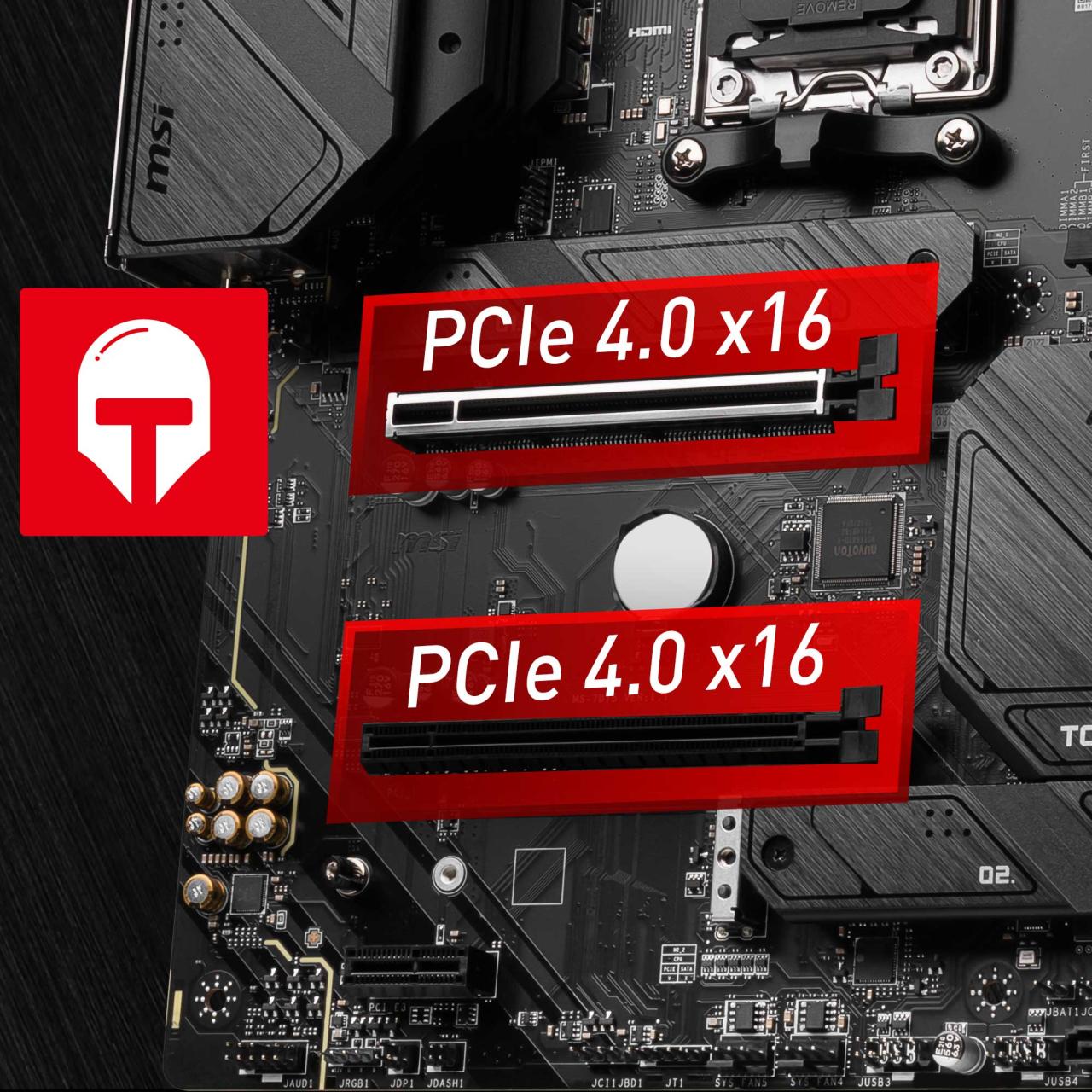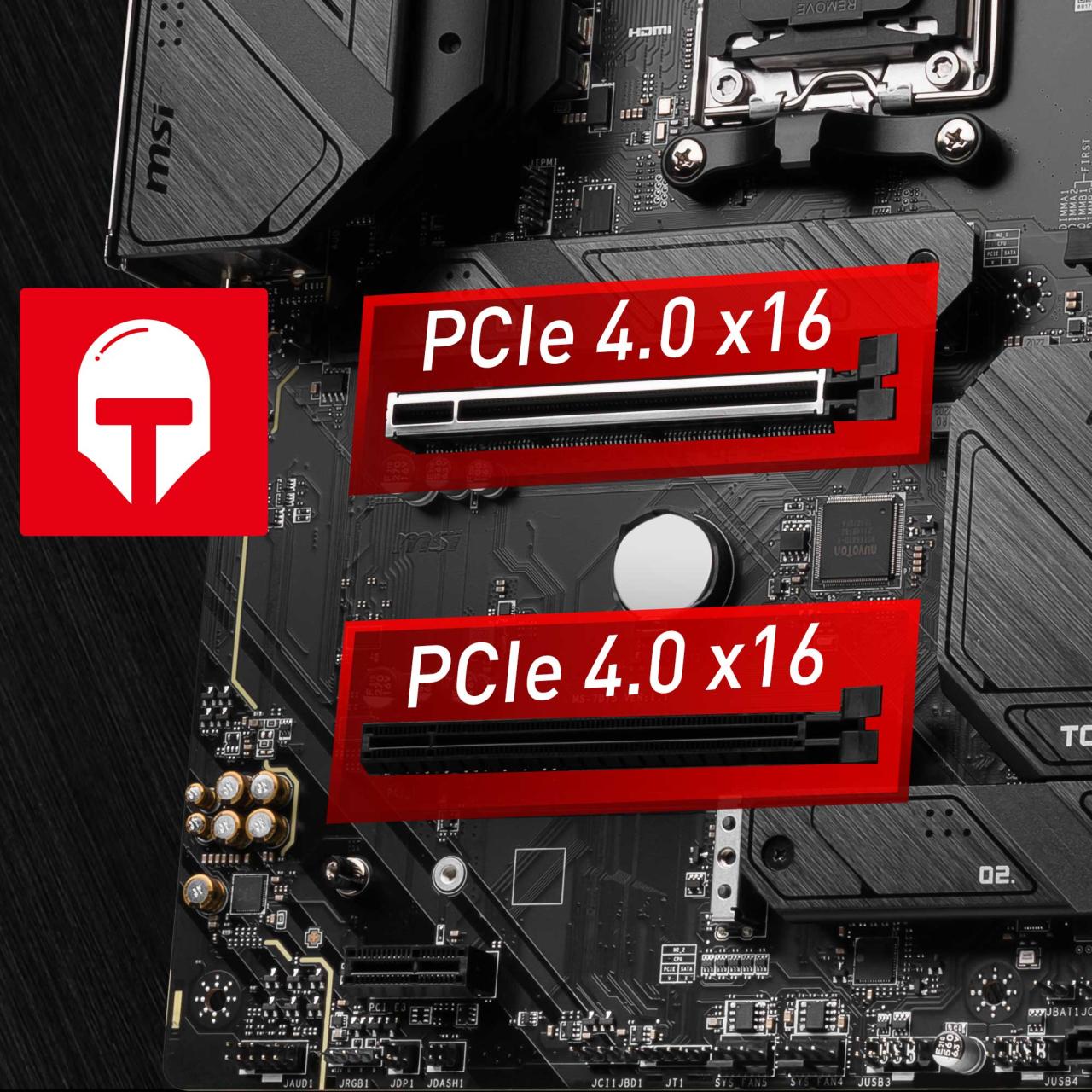MSI B650 Gaming Plus WIFI Manual: Dive into the world of this powerful motherboard! This guide walks you through everything you need to know, from initial setup and BIOS navigation to advanced overclocking and troubleshooting. We’ll cover connectivity options, compatibility, and even power management, ensuring you get the most out of your MSI B650 Gaming Plus WIFI. Get ready to build your dream PC!
Whether you’re a seasoned PC builder or a first-timer, this manual provides clear, step-by-step instructions and helpful tips to make the process smooth and enjoyable. We’ll explore the motherboard’s key features, BIOS settings, connectivity options, and more, equipping you with the knowledge to build and optimize your system for peak performance.
MSI B650 Gaming Plus WIFI Motherboard Overview

The MSI B650 Gaming Plus WIFI motherboard offers a compelling blend of features and affordability for PC builders. It’s designed for users who want a reliable and capable platform for gaming and general-purpose computing, without breaking the bank. This motherboard sits comfortably in the mid-range segment of MSI’s B650 lineup, providing a solid foundation for building a powerful and versatile system.
Target Audience and Product Positioning, Msi b650 gaming plus wifi manual
This motherboard targets budget-conscious gamers and PC enthusiasts seeking a balance between performance and price. It’s ideal for users building a system with AMD Ryzen 7000 series processors. Within MSI’s product line, the B650 Gaming Plus WIFI positions itself as a step up from entry-level B650 boards, offering more features and better performance while remaining competitively priced against similar offerings from other manufacturers.
BIOS and UEFI Settings
Accessing the BIOS/UEFI is typically done by pressing the Delete or F2 key repeatedly during the system boot process. The exact key may vary depending on your system configuration. The BIOS/UEFI provides extensive control over system settings, allowing for fine-tuning performance and stability. Below are some key settings and their recommended values. Note that optimal settings may vary depending on your specific hardware.
So you’re diving into the MSI B650 Gaming Plus WiFi manual? Getting your motherboard set up right is crucial. It’s a bit like setting up your printer’s WiFi – you need to follow the steps carefully. For instance, if you’re having trouble with your Canon printer, check out this guide for canon ts3420 wifi setup to get an idea of the process.
Once you’re comfortable with network configurations, you’ll find the MSI manual much easier to follow. Remember, patience is key with both!
| Setting Name | Description | Default Value | Recommended Value |
|---|---|---|---|
| CPU Core Ratio | Sets the base clock multiplier for the CPU. | Auto | Adjust based on CPU model and cooling solution (consult manufacturer’s specifications) |
| DRAM Frequency | Sets the speed of the RAM. | Auto | XMP Profile 1 (if supported by your RAM) |
| CPU Voltage | Sets the voltage supplied to the CPU. | Auto | Adjust cautiously during overclocking (monitor temperatures closely) |
| Boot Priority | Determines the boot order of your storage devices. | First Boot Device (Usually the primary NVMe or SSD) | Ensure your desired boot device is prioritized. |
Best practices include saving your BIOS settings regularly, starting with small overclocking increments, and monitoring temperatures using software like HWMonitor. Avoid extreme settings unless you are experienced with overclocking.
Connectivity Options
The MSI B650 Gaming Plus WIFI motherboard provides a comprehensive range of connectivity options to cater to various needs. The selection of ports ensures easy integration with various peripherals and networking solutions.
- Several USB 3.2 Gen 2 ports (Type-A and Type-C)
- At least two USB 2.0 ports
- A Gigabit Ethernet LAN port
- High-definition audio jacks (7.1 channel)
- Integrated Wi-Fi 6E and Bluetooth 5.2
- Multiple SATA III ports
- M.2 slots for NVMe SSDs
The integrated Wi-Fi 6E and Bluetooth 5.2 offer fast and reliable wireless connectivity, comparable to similarly priced motherboards. The inclusion of multiple USB 3.2 Gen 2 ports provides high-speed connectivity for external storage and peripherals.
Overclocking Capabilities
The MSI B650 Gaming Plus WIFI motherboard offers decent overclocking potential for both the CPU and RAM. The effectiveness of overclocking depends heavily on the specific CPU and RAM modules used, along with adequate cooling. Always proceed cautiously and monitor temperatures to prevent damage to your components.
To safely overclock the CPU using the BIOS/UEFI, start by enabling the XMP profile for your RAM. Then, incrementally increase the CPU multiplier while carefully monitoring CPU temperatures and stability. Use stress testing software like Prime95 or Aida64 to evaluate stability at higher clock speeds.
| CPU Model | Safe Overclock (GHz) | Recommended Voltage Increase (Volts) |
|---|---|---|
| AMD Ryzen 7 7700X | 5.0 – 5.2 | 0.1 – 0.15 |
| AMD Ryzen 5 7600X | 4.8 – 5.0 | 0.1 – 0.12 |
| AMD Ryzen 7 7800X3D | 4.8 – 5.0 (Precision Boost Override) | Minimal to none recommended |
Note: These are example values. Actual results may vary. Always prioritize system stability and safe operating temperatures.
Troubleshooting Common Issues: Msi B650 Gaming Plus Wifi Manual
Several common issues might arise with the MSI B650 Gaming Plus WIFI motherboard. Addressing these problems often involves simple troubleshooting steps.
- No POST (Power On Self Test): Check all power connections, including the 24-pin ATX and 8-pin EPS connectors. Ensure the CPU is correctly seated and the RAM is properly installed. Try reseating all components. If the issue persists, try using only one stick of RAM in a different slot.
- System Instability (crashes, freezes): Check CPU and system temperatures. Ensure sufficient cooling. If overclocking, reduce the clock speed and/or voltage. Reinstall drivers and update the BIOS to the latest version.
- Connectivity Problems (Wi-Fi/Bluetooth): Ensure the Wi-Fi adapter is enabled in the BIOS/UEFI and the drivers are installed correctly. Check your router settings and try restarting both the computer and the router.
- USB Ports Not Working: Check the BIOS/UEFI to ensure that USB ports are enabled. Try different USB ports. If the issue persists, check the USB controller drivers.
Diagnosing POST errors often involves checking the system’s visual cues like beeps or error codes displayed on the motherboard’s debug LEDs. Consult the motherboard manual for specific error code interpretations.
Software and Drivers

To ensure optimal functionality, install the necessary software and drivers from the MSI website. This includes the chipset drivers, LAN drivers, audio drivers, and any other specific drivers for your components. The MSI website provides support documents, FAQs, and troubleshooting guides to help with installation.
The installation process generally involves downloading the appropriate drivers from the MSI support page, extracting the files, and running the installer. Make sure to select the correct drivers for your operating system. You can find these resources by searching for your motherboard model (“MSI B650 Gaming Plus WIFI”) on the MSI website’s support section.
Physical Specifications and Components

The MSI B650 Gaming Plus WIFI motherboard typically adheres to the ATX form factor, with dimensions around 30.5cm x 24.4cm. The layout is designed for ease of use and component accessibility.
The motherboard includes:
Diagrammatic Description (replace with actual diagram if possible): Imagine a rectangular board. The top-left corner features the CPU socket (AM5), flanked by the RAM slots (typically four DDR5 slots). To the right, you’ll find the primary PCIe x16 slot for your graphics card. Below that are additional PCIe slots and M.2 slots for NVMe SSDs. The bottom of the board houses the SATA ports, various USB headers, and other connectors.
The rear panel includes the I/O ports mentioned earlier.
So you’ve got your MSI B650 Gaming Plus WiFi motherboard and want to make sure everything’s running smoothly? A key part of that is your WiFi connection. To optimize it, you might want to check what GHz band your iPhone is using – find out how by checking how to check your wifi ghz on iphone – and then compare that to what your MSI B650 Gaming Plus WiFi manual recommends for best performance.
This helps you troubleshoot any connection issues and get the most out of your setup.
The layout is generally comparable to other ATX motherboards in its class, though specific component placements may vary slightly.
Compatibility and Upgrades
The MSI B650 Gaming Plus WIFI motherboard supports AMD Ryzen 7000 series processors and DDR5 RAM. It’s compatible with various storage devices, including NVMe SSDs and SATA HDDs/SSDs. It also features multiple PCIe slots for expansion cards.
So you’re diving into the MSI B650 Gaming Plus Wifi manual – good choice! It’s packed with info, but sometimes troubleshooting can feel like a drone crash – a sudden, unexpected halt. Luckily, the manual’s clear diagrams and explanations can help you navigate those tricky BIOS settings and get back on track with your build quickly.
Remember to check the troubleshooting section first!
Upgrade paths include future AMD CPU generations (potentially with BIOS updates), RAM upgrades (to higher speeds and capacities within the supported limits), and adding more storage devices. When selecting compatible components, always check the motherboard’s specifications and the manufacturer’s website for compatibility lists.
Power Management Features

The motherboard employs multiple power phases for efficient and stable voltage regulation to the CPU. This ensures sufficient power delivery for demanding workloads and prevents voltage fluctuations, contributing to system stability. The number of power phases and the quality of the components used in the VRM (Voltage Regulator Module) influence the motherboard’s power delivery capabilities and energy efficiency.
Specific details regarding the exact number of power phases and other power management features are available in the motherboard’s specifications sheet. A comparison with competing motherboards would involve examining the VRM design and specifications of each model.
Outcome Summary
Mastering your MSI B650 Gaming Plus WIFI motherboard is now within reach! This guide has provided a comprehensive overview, from initial setup to advanced tweaking. Remember to consult the official MSI website for the latest drivers and software updates. With the right knowledge and a little patience, you’ll be enjoying the power and performance of your new build in no time.
Happy building!
FAQ
Where can I find the latest BIOS update?
Visit the official MSI website and search for your motherboard model. Download the latest BIOS from their support section.
What RAM speeds are supported?
Consult your motherboard’s specifications; the manual should list supported RAM speeds and timings. This varies depending on the CPU used.
My PC won’t boot. What should I do?
Check all connections (RAM, CPU, power supply). Try reseating components. If the issue persists, try clearing the CMOS.
What are the best settings for a first-time overclock?
Start with small, incremental increases to CPU clock speed and voltage. Monitor temperatures closely. It’s best to start with the motherboard’s automated overclocking features before manual adjustments.
